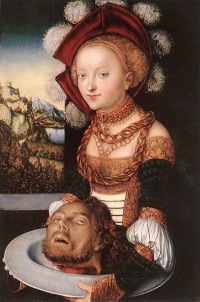Female crime
From The Art and Popular Culture Encyclopedia
|
Related e |
|
Featured: |
- women: mad or bad?
Gender is a factor that plays a role in both human and animal aggression. Males are generally more aggressive than females (Coi & Dodge 1997, Maccoby & Jacklin 1974), and men commit the vast majority of murders (Buss 2005). This is one of the most robust and reliable behavioral sex differences, and it has been found across many different age groups and cultures. There is evidence that males are quicker to aggression (Frey et al 2003) and more likely than females to express their aggression physically (Bjorkqvist et al. 1994). However, some researchers have suggested that females are not necessarily less aggressive, but that they tend to show their aggression in less overt, less physical ways (Bjorkqvist et al. 1994, Hines and Saudino 2003). For example, females may display more verbal and relational aggression, such as social rejection.
In fiction: the femme fatale trope
A femme fatale (plural: femmes fatales) is an alluring and seductive woman whose charms ensnare her lovers in bonds of irresistible desire, often leading them into compromising, dangerous and deadly situations. She is an archetypal character of literature and art.
Female murderes
- Mary I of England (1516 – 1558), the so-called "Bloody Mary"
- Elizabeth Bathory (1560 – 1614)
- Christine and Lea Papin (1905 - 1937) and (1911 - 2001), two French maids who brutally murdered their employer's wife and daughter in Le Mans, France in 1933.
- Ilse Koch (1906 – 1967), Nazi concentration camp guard
- Myra Hindley (1942- 2002), mass murderer
See also
- Feminist school of criminology
- Gender and crime
- Black widow
- list of women who have murdered their husbands
- Mariticide
- Female serial killer
- Criminal Woman, the Prostitute and the Normal Woman (1893) - Cesare Lombroso, Guglielmo Ferrero
- Women in prison
- Warrior woman


